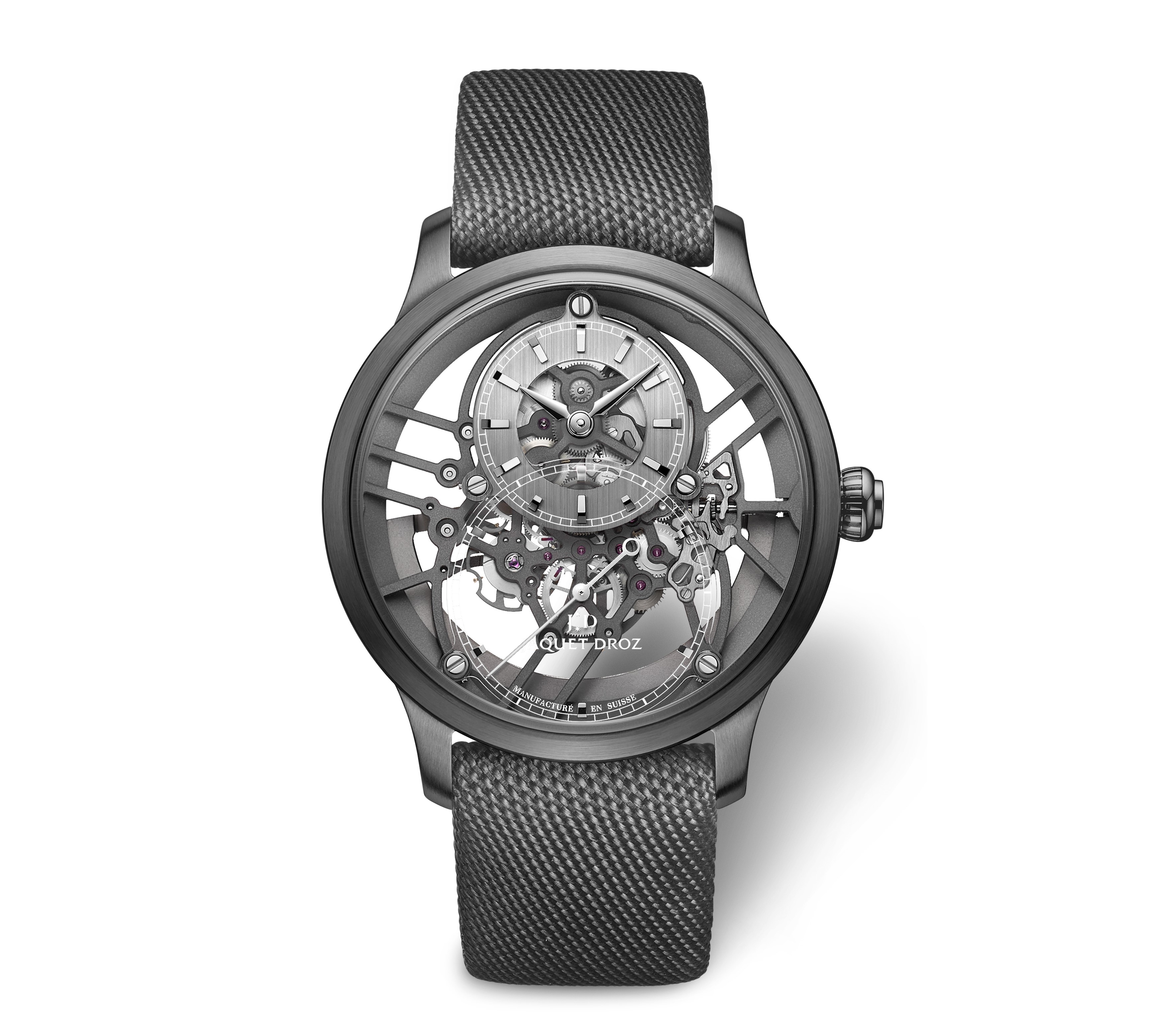I’m often asked about current fads in watches, and the answer is usually the same: brand after brand continues to rely on retro-flavoured pieces (Omega’s Speedmaster, Tudor’s Black Bay, Tag’s Monaco etc) and each year, commentators excitedly note the raft of blue-dialled dalliances being introduced by all and sundry, hailing “blue as the new black”.
In fact, the latest thing is the watch with no dial at all. This sees watches discarding the traditional ‘face’ and outing the internals, making them the undisputed hero of the show. It makes sense – this after all is the important part of a timepiece, not to mention the most mesmerising to look at.
But while the cogwork has, of course, always been there, watchmakers seldom saw fit to let it star, giving preference to the time of day or other displays, something that these days can be found blinking at you from a thousand appliances. Exposed cogs are also a visual reminder of a mechanical movement’s superiority over the dull-looking quartz movement, one that’s accurate but dominated by a component as uninteresting as a battery.
The beauty of a mechanical calibre (movement) was always expressed in terms of its longevity, its green credentials – the fact it powers itself – and its general tick-tocky cleverness. But now, with so-called skeletonised models from Audemars Piguet to Zenith, it’s the visual beauty of the contraption that you can enjoy whenever you glance at the time.
The process of revealing all sounds relatively straightforward; scrap the dial and chisel away anything else that obscures spindle or spring. In reality, it’s not nearly so simple. The more you remove, the less there is holding everything together. And all those little wheels and ancillary parts need a solid framework to make sure they sit in the right place and mesh.
Hence, skeletonising a movement entails not only careful sculpting, but intricate building-up, with a complete ground-up redesign required more often than not. This means you’ll certainly end up paying more for less, so to speak. But what a treat awaits you, as a glance at these recent arrivals illustrates.

Formula 1 for the forearm
The Richard Mille RM 11-05 Automatic Flyback Chronograph GMT brings Formula 1-like engineering prowess, performance and exotic materials – in this case, grey cermet – to the forearm. A combination of ceramic and metal, cermet “has the lightness of titanium and the hardness of a diamond” and here encases a complex movement with chronograph, annual calendar and GMT displays. $325,000 region.

Sleek treat
Bvlgari’s Octo Finissimo Skeleton is the Jenny Craig of timepieces, a true featherweight thanks to an octagonal titanium case just 2.23mm thick. With the movement the hero, the only concession to traditional design is the hands for hours, minutes, small seconds and power reserve, the latter an impressive 65 hours. $35,000 range.

Power pack
The Hublot Spirit of Big Bang Meca-Ten shows off a movement offering a muscular 10 days’ power reserve, its parts left raw, polished or blackened for added effect. It features an unusual power reserve display involving sliding racks with an opening showing the number of days left. Cased in gold, ceramic or titanium, this sells from around $37,000.

Ceramic surrounds
The Jaquet Droz Grande Seconde Skelet-One Plasma Ceramic holds attention whether you’re looking for the time or looking to pass it. The 41.5mm case is a super scratch-resistant ceramic, the exposed black-coated self-winding movement has a white-gold oscillating weight that powers up two barrels with 68 hours in reserve, and there’s a silicon balance spring – all on show. $37,000 range.
Off-centre
Cartier’s Tank Asymétrique is a cheekily skewed and skeletonised version of Louis Cartier’s original ‘Tank’ watch dating to 1917. The off-kilter design is no less arresting today, especially in this sculptural version, which is new for 2020. Manually wound and cased in gold or platinum, it’s limited to 100 pieces in each and priced from around $95,000.

Full house
The Vacheron Constantin Overseas Perpetual Calendar Ultra-Thin Skeleton displays the day, date, month, moonphase, hours and minutes – all floating serenely above hand-finished cogwork just 4.05mm in depth. The gold case spans 41.5mm and comes with a matching bracelet, plus rubber and alligator straps. You’re looking at the $220,000 range.

Night vision
The Roger Dubuis Excalibur Twofold boasts three ‘firsts’ – a case and bezel in ultra-white mineral composite fibre, luminous treatment outlining the movement’s bridges, and a strap injected with fluorescence. The 301-part skeletonised double-tourbillon movement is the result of 1200 hours of development. Just eight will be made, and will sell for around $430,000.

Bang for your buck
The Oris Big Crown ProPilot X is the bargain here. Cased in titanium and mounted on a sleek titanium bracelet or integrated strap, the movement is not so much skeletonised – i.e. cut away after the event – as designed from the outset to be the hero, down to the massive coiled spring in the winding barrel delivering 10 days of power. $12,000 range.
Follow Bani @baniwatch














